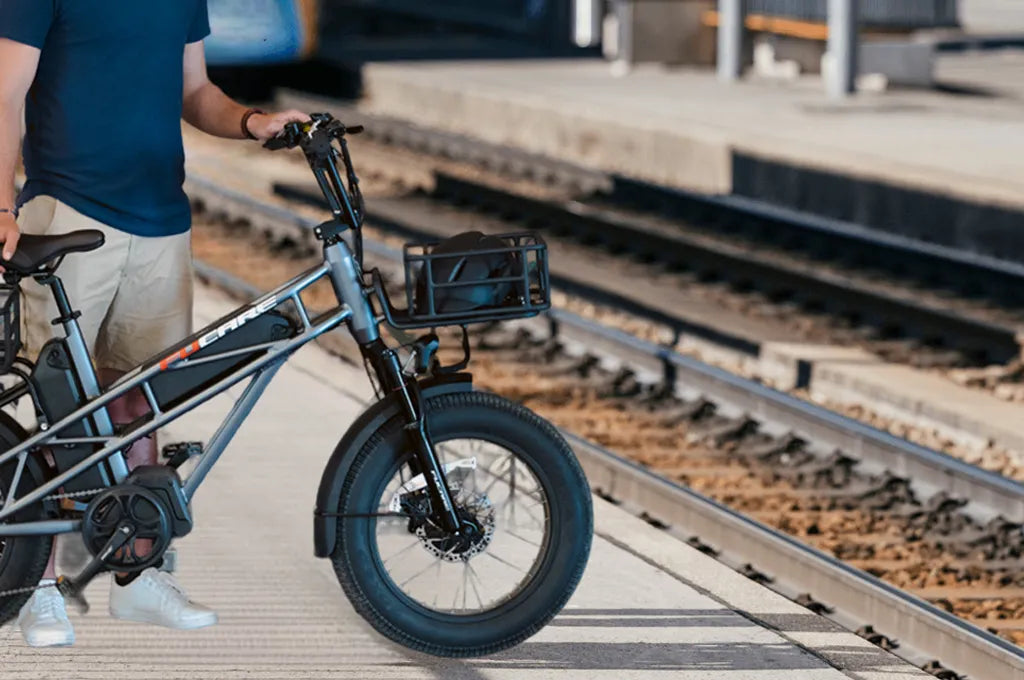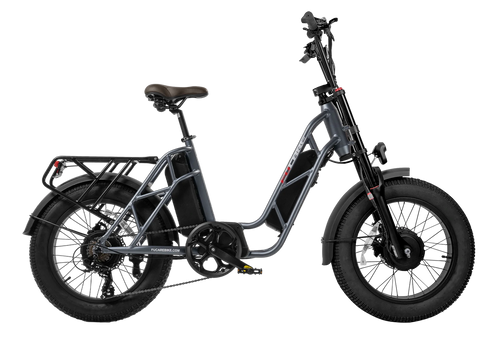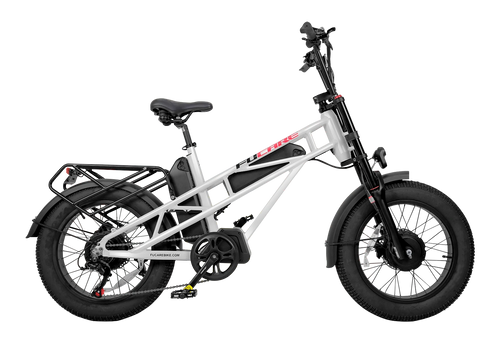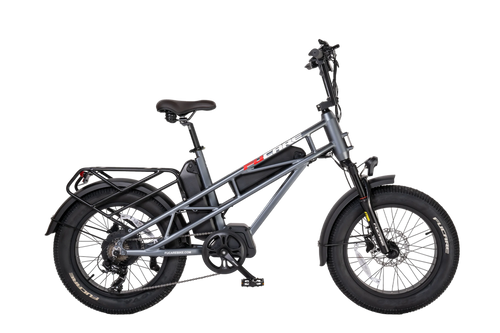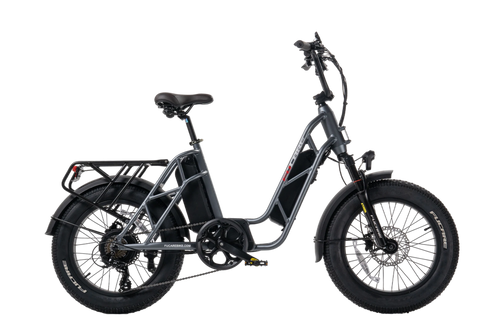Why Is My E-bike Disc Brake Squeaking and How to Fix It?
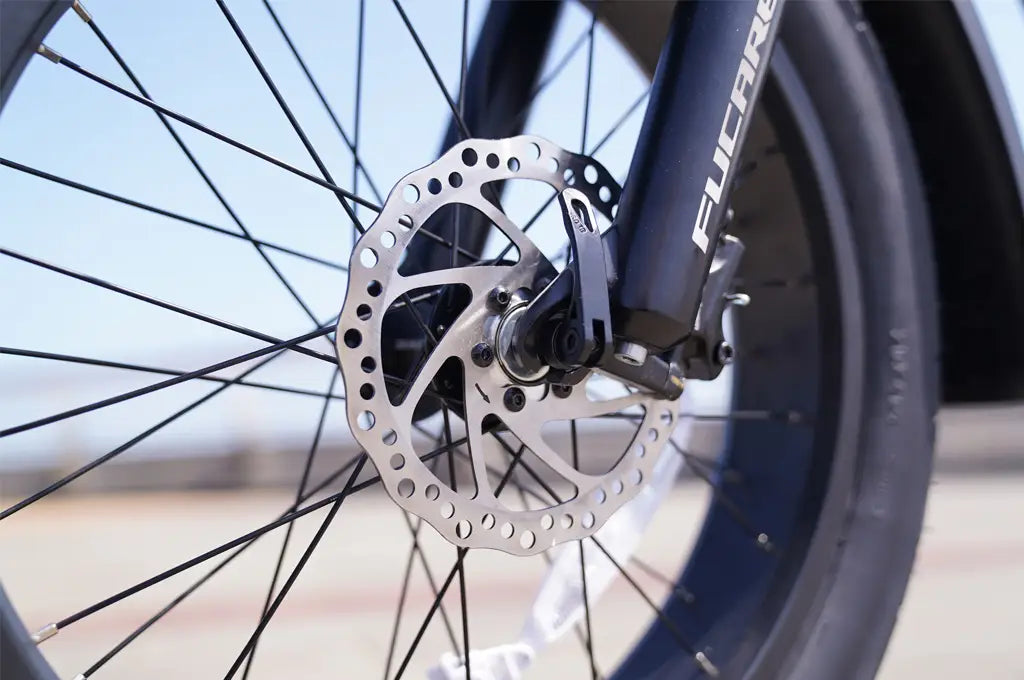
Squeaking e-bike disc brakes are often caused by dirt, oil, or moisture on the rotors. Warped rotors or glazed brake pads may also contribute. To fix it, clean the rotors with isopropyl alcohol, check for damage, and ensure proper alignment of the calipers and pads.
In this article, we’ll explore the causes of squeaky disc brakes and offer effective solutions to get rid of the noise for good.
Why Do E-bike Disc Brakes Squeak?
Disc brakes on e-bikes, just like on regular bicycles or even cars, rely on the friction between the brake pads and rotors to stop your bike. A squeaking sound is typically caused by vibration during braking, often amplified by specific conditions such as contamination or misaligned components. While not always dangerous, the noise can be a sign that something isn’t functioning as optimally as it should be.
Below are the most common reasons why your e-bike disc brakes might squeak:
1. Contaminated Brake Pads or Rotor

One of the most common causes of squeaky disc brakes is contamination. Your brake pads or rotor can easily get contaminated by oil, dirt, or even water. E-bikes, in particular, might be more prone to contamination because they are often used in all-weather conditions. Contamination can occur from lubricants used elsewhere on the bike, like chain oil, which might accidentally spill onto the brake components. Once brake pads or the rotor become contaminated, the friction decreases, and the pads might produce a squeaking noise.
Solution:
To fix contamination, the brake pads and rotors need a thorough cleaning. Start by using isopropyl alcohol or a specialized disc brake cleaner, which you can find at most bike shops. Apply the cleaner to a clean rag and wipe the rotor thoroughly. Cleaning the rotor might remove surface contaminants, but if the pads themselves are soaked with oil or other lubricants, they’ll need to be replaced.
2. Incorrect Bedding In
Bedding in the brake pads is a crucial step often overlooked by e-bike owners, especially when you buy a new electric bike or replace the brake pads and rotors. Bedding in refers to the process of evenly transferring material from the pads to the rotor to create a smooth braking surface. Without proper bedding, the pad material might transfer unevenly onto the rotor, creating a glazed surface that squeaks and reduces braking performance.
If you skip this important step after getting new brake components, you risk glazing the pads, which not only reduces braking power but also increases the likelihood of noise and vibration. Therefore, it is highly recommended to bed in your brakes anytime you install new pads or rotors.
Solution:
To bed in your brake pads, follow these simple steps:- Find a flat surface and ride your e-bike at a moderate speed.
- Apply the brake gently until you slow down to a walking speed.
- Release the brake, allow the bike to regain speed, and repeat the process 20 times for each brake.
This will help evenly distribute the material and reduce the risk of squeaking caused by improper bedding, ensuring smoother and more effective braking performance.
3. Worn-Out Brake Pads

When your brake pads have worn through all of their friction material, the metal backing plate can rub directly on the rotor. Not only does this create a loud squealing sound, but it also damages the rotor. It’s important to regularly check the thickness of your brake pads and replace them before they wear down completely.
Solution:
Inspect your brake pads regularly and replace them when the material is too thin. To replace them, you’ll need to remove the caliper and pop out the old pads. Most brake pad sets come with instructions for proper installation. Once installed, remember to bed in the new pads to ensure optimal performance.
4. Wet Brakes
If your brakes are wet, whether from rain or after washing your bike, they might squeak temporarily. Water can reduce the friction between the brake pads and rotor, causing a high-pitched noise. This type of squeak typically goes away once the brakes dry out, but it’s important to monitor whether the noise continues after they’ve dried.
Solution:
Let the brakes dry out naturally, and the squeaking should subside. If they continue to squeak after drying, there might be contamination or another underlying issue at play.
5. Dirty Rotor
Over time, dirt and grime can build up on the rotor, leading to reduced braking performance and noise. A dirty rotor might not provide a smooth surface for the brake pads, which can result in vibrations and squealing.
Solution:
Use isopropyl alcohol or a non-toxic disc brake cleaner to clean the rotor. Simply apply the cleaner to a clean cloth and wipe down the rotor thoroughly, paying attention to both sides. Be cautious not to touch the rotor with oily or greasy hands afterward.
6. Glazed Pads or Rotor
If your brake pads have become glazed, they develop a shiny surface that reduces their effectiveness. Glazing can happen if the pads have been overheated, such as during a long descent or intense braking session. The pads or rotor may have a smooth, polished look, and this can lead to squeaking.
Solution:
Sanding the pads is one way to remove the glazed surface. Use 100-120 grit sandpaper and sand the pads lightly until you see a fresh, non-glazed surface. Additionally, sand the rotor gently in a diagonal pattern to remove any smooth grooves. Always clean both the rotor and the pads after sanding to remove any dust or residue before reinstalling them.
7. Misaligned Brake Pads or Rotor
If the brake pads aren’t aligned correctly within the caliper, they might make contact with the rotor unevenly, causing noise. Misalignment can occur after a crash, an improper installation, or gradual wear.
Solution:
Check that the brake pads and caliper are properly aligned with the rotor. Many modern e-bikes have adjustable calipers, so you can fine-tune the position to ensure even contact. Loosen the caliper bolts slightly, squeeze the brake lever to center the pads on the rotor, and then tighten the bolts while keeping the lever pressed.
Conclusion
Squeaky e-bike disc brakes can be a frustrating experience, but fortunately, most causes of the noise are easily fixable. Whether it's contamination, worn pads, improper bedding, or dirty rotors, each problem has a specific solution that can restore your brakes to their quiet, efficient operation. Regular maintenance is key to preventing these issues in the first place. Keep your rotor clean, check your pads frequently, and make sure to bed in new pads properly. By doing so, you can enjoy a smooth, quiet, and safe ride on your e-bike without the annoyance of squeaky brakes.
Continue reading
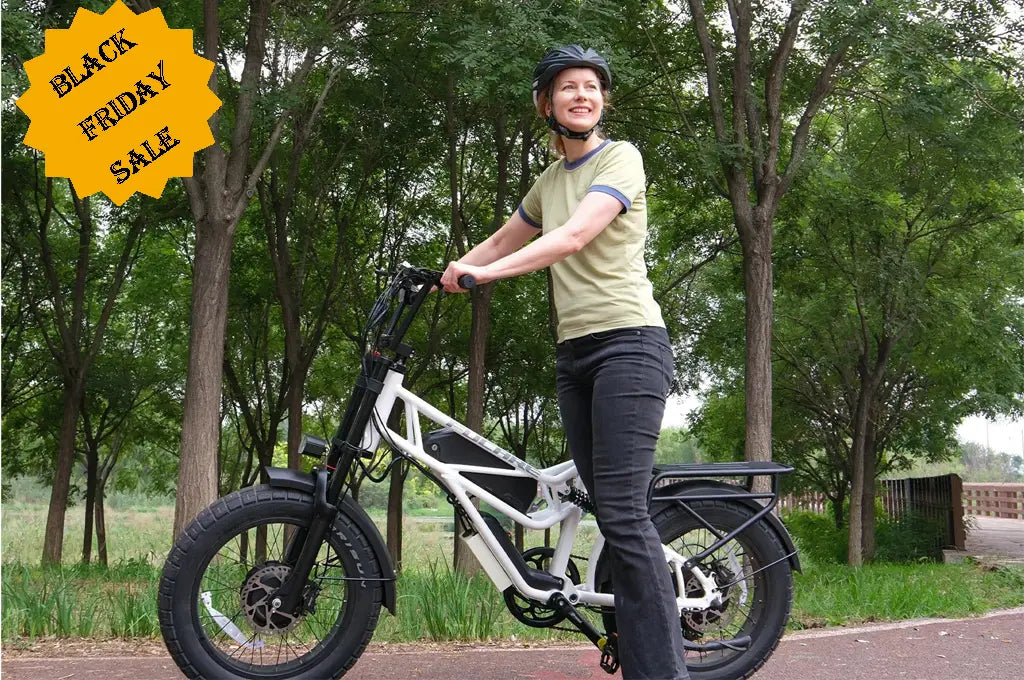
2024 Black Friday Fucare E-Bike Deals: Save Big on Top Models!
